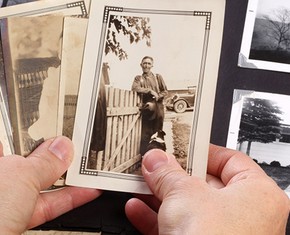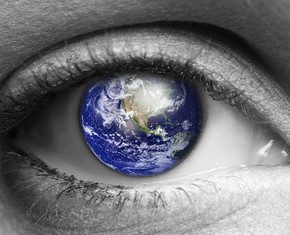The views expressed in our content reflect individual perspectives and do not represent the authoritative views of the Baha'i Faith.
Okay, here’s a big question: In your opinion, what should our society do about drug use and addiction? We need to do something: in the U.S. alone, more than a hundred people a day die from overdoses.
Historically, we’ve tried all kinds of approaches. In the past, we’ve stigmatized addicts, imprisoned them, whipped them, and even executed them. This punitive policy still prevails in some places.
More recently, some have decided that punishment doesn’t work, so we’ve medicalized addiction by calling it a disease and setting up treatment centers, therapy groups, and psychoanalysis programs. We’ve opened methadone or buprenorphine centers, substituting another, less harmful, addictive drug for the opioids. Out of frustration, some societies have even tried legalizing all drugs, providing free doses for addicts along with safe, private spaces to inject them.
RELATED: Are Habit Forming Drugs like Marijuana Really Harmless?
Despite this variety and diversity of approaches, nothing seems to really work as well as it might — we’ve still got a dire and burgeoning opioid epidemic on our hands, not to mention the continuing use of alcohol, pot, meth, and many other drugs. (Yes, alcohol is a drug — a psychotropic central nervous system depressant.)
The problem has become severe. In the United States today, drug overdoses have risen so high that they’ve become the leading cause of death for all people under the age of 50. That stunning fact has begun to wake people up, and policymakers are struggling to find solutions. In countries around the world, the toll is rising and rising fast.
The New York Times recently reported that “heroin addiction and prescription opioid misuse have become a 50-state epidemic, a deadly health care disaster overwhelming local, state and federal officials.”
So what’s your solution? Do you have an approach to the drug crisis that you think might work? If you haven’t come up with any suggestions yet, it’s worth thinking about.
Here are some of the major considerations:
- What role should law enforcement play, and what role should health professionals play?
- Do we attack the problem by making it a criminal issue, largely ceding the responsibility to the justice system, or do we consider it a health issue and let the medical community try to heal it?
- Meanwhile, what do we do about crimes against property or people committed by addicts?
- Do we legalize all drugs, or criminalize them, or something in between?
Policymakers have struggled with these questions for a long time now, and basically, they’ve coalesced into two major schools of thought.
First, most addiction specialists say that alcoholism and drug addiction are chronic, progressive diseases best dealt with in a treatment setting.
Second, some (but not all) criminal justice experts view drug addicts as moral failures and criminals with no regard for the rights of others, who should be locked up to protect society — and themselves.
One insightful expert on the subject, Maia Szalavitz, an ex-addict herself, a journalist, and the author of “Unbroken Brain: A Revolutionary New Way of Understanding Addiction,” says: “When it’s our own loved ones who become addicted, we tend to favor the first explanation; when it’s someone else’s, we favor the second.”
Szalavitz’s book contravenes the conventional polarized crime vs. disease wisdom in many ways, but she has a very unique and persuasive perspective on what produces an addict. Many people believe that the recent spike in the epidemic of opioid abuse and addiction comes directly from physicians over-prescribing synthetic opioids like oxycodone for the treatment of chronic pain. They cite these numbers as proof: In 2012, doctors in the U.S. wrote 259 million prescriptions for opioid painkillers, enough for every American adult to get a bottle of them. Szalavitz strongly disagrees with that analysis, saying in her book that prescription pain treatment is not the most significant risk factor for addiction:
Far greater risk comes from simply being young and from using alcohol and other recreational drugs heavily. Ninety percent of all drug addictions start in the teens — and 75 percent of prescription opioid misuse begins when (mainly young) people get pills from friends, family or dealers — not doctors.
If that’s true, regardless of whether you see addiction as a crime or a disease, it quickly becomes obvious that the best way to stop drug addiction involves focusing on the young and preventing those young people from using and then becoming addicted in the first place. Unfortunately, no prevention-centered approach has ever received the attention, the funding, or the serious commitment required to make it widespread or effective.
That kind of early prevention best occurs, experts agree, when young people have effective parenting, good adult role models, and, most importantly, a peer-supported moral framework that effectively helps them avoid early experimentation with addictive chemicals.
Baha’is have learned that early childhood spiritual education can help provide that framework.
That’s one of the reasons Baha’i communities everywhere focus on educating children and youth — and not just the young people in the Baha’i community, but the entire community. Free Baha’i children’s and youth classes are open to everyone and build community and peer support in a humble posture of learning without bias or indoctrination. The unifying spiritual environment those classes create and the powerful peer support for a drug-free lifestyle they bolster can help young people avoid the initial drug experimentation that always precedes heavier use and addiction.
Shoghi Effendi, the Guardian of the Baha’i Faith, wrote a 1938 letter called The Advent of Divine Justice, encouraging all Baha’i youth to lead spiritual, moral lives, which:
… calls for the abandonment of a frivolous conduct, with its excessive attachment to trivial and often misdirected pleasures. It requires total abstinence from all alcoholic drinks, from opium, and from similar habit-forming drugs.
This early, youth-based, prevention-related advice echoes Baha’u’llah’s repeated injunctions to the Baha’is to avoid all mind-altering substances:
Cast away, then, from you that which your minds abhor, for it hath been forbidden unto you in His Tablets and His Scriptures. Beware lest ye barter away the River that is life indeed for that which the souls of the pure-hearted detest. Become ye intoxicated with the wine of the love of God, and not with that which deadeneth your minds …
RELATED: The Dire Baha’i Warning About Opioids
The Baha’i teachings say that this kind of early moral training and spiritual education can actually help children and youth avoid the pain and madness of addiction, as this prayer from Abdu’l-Baha illustrates:
O Divine Providence! Bestow Thou in all things purity and cleanliness upon the people of Baha. Grant that they be freed from all defilement, and released from all addictions. Save them from committing any repugnant act, unbind them from the chains of every evil habit, that they may live pure and free, wholesome and cleanly, worthy to serve at Thy Sacred Threshold and fit to be related to their Lord. Deliver them from intoxicating drinks and tobacco, save them, rescue them, from this opium that bringeth on madness, suffer them to enjoy the sweet savours of holiness, that they may drink deep of the mystic cup of heavenly love and know the rapture of being drawn ever closer unto the Realm of the All-Glorious.
If you’re a young person or know one, get in touch with your local Baha’i community and get involved with Baha’i children’s and youth activities — their gentle, helpful approach could prevent a future tragedy.
















Comments
Sign in or create an account
Continue with Googleor